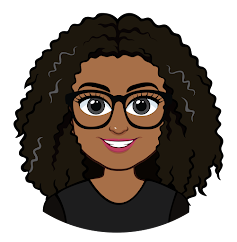I love this session! I found it very informative. It also served as confirmation that the supports I provided my students this school year was on point. Ms. T. Luther led this session and as always she did a fantastic job. This love that she let the teachers drive the instruction for this session. Since beginning my transition in my science classroom, I often here teachers say that our student population can't make connections, etc. This idea is not true! ALL students can participate in sensemaking when the educator provides the appropriate support. Again, LDOE has done an excellent job providing the support for Louisiana Science Educators. The title of this document is, "Supporting Student Sensemaking: Developing and Using Models and Constructing Explanations." This tool has been adopted from OpenSciEd, "Instructional Strategies for Writing and Drawing" and "Shifts in Writing and Drawing for Sensemaking"
Session Goals:
- Explore the relationship practices of Developing and Using Models and Constructing Explanations from Louisiana Student Standards for Science.
- Examine how the shifts in writing and drawing for sensemaking support students in building the knowledge and skills called for LSSS.
- Analyze samples of student work to plan student supports in writing and drawing for sensemaking.
I love this quote in Ms. Luther's Presentation, " Modeling and forming explanations are two critical ways that scientists build knowledge and then test, critique, and revise that knowledge. They are tools that scientist use to help them. " This quote resonated with me, because it's a true reflection of the shifts that are taking place and compliments the next section of her presentation, "Shifts In Writing and Drawing for Sensemaking."
Ms. Luther began this part of the session with an open discussion, asking educators to read the shifts in writing and drawing. Then, she asks us identify, which statements resonated with us and why. Afterwards, she discussed the shifts in writing and drawing with more detail. The shifts in drawing and writing simply states, " Students will do the figuring out, make sense of investigations, using science vocabulary when needed, and prioritizing multiple different forms for writing/drawing." Students will be driving the instruction.
When then looked at Lesson 11 from Ihub Biology curriculum titled, "How can we reduce the negative impacts of human activity of human activity on climate?" I love beginning a lesson with a discussion question that requires students use prior knowledge to answer. The questions were,
Thinking about Carbon Dioxide
- What do you know about carbon dioxide?
- How does carbon dioxide affect the environment?
I love the phenomenon for this unit because students practice interpreting graphs (which is important on the ACT and other tests), make detailed observations (notice and wonder), and think about possible solutions to problems. Students will have the opportunity to watch a video, identify the claims made in the video, and if they were true. Students are given the opportunity to model a claim.
Claim: Trees take carbon dioxide out of the air as they grow, storing it as wood.
Students get to compare their models, determine what is similar and different between them, and record new questions? She referred to the LDOE planning guide for science-->Step 4--> Plan for future instructions. This guide is to assist educators on planning next steps for students.
Plan for future instruction:
- Based on this student work analysis, what are the implications for future instruction?
- What is the plan for responding to students needs for just in time support and enrichment?
Educators need to ask themselves the following questions when asking students to create models:
- What are the components of a good model?
- What parts of the system should be represented?
Suggestion: I use graphic organizers from the Wonders of Science to assist me with this. I made adjustments for my student population.
Next, we looked at the instructional strategies for supporting students in writing and drawing. As I looked this document, it served as confirmation for myself. I provided the correct support for my students. This document has two categories inital student supports and support for deeper reflection. I made annotation in blue. Here are some examples:
Initial Student Supports Supports for Deeper Reflection
Talk out loud Characteristics
Sentence Stems/Image Starters-I used this Evaluate Examples-Peer Review often with Students with Exceptionalities.
Select from options Checklists-Gotta Have It Checklist
Graphic Organizer-used to organize ideas Providing Feedback
We also looked at student exemplars, and analyzed them. I love that she asked educators to dig deeper analyzing the samples. For myself, this session help me build on the foundation I already have. This event is also a perfect session for an educator who has decided to transition their practice to reflect the vision of LSSS or NGSS. I am going to provide a link to my previous post, My First Month Using Storylines, so you can see the addtional supports I provided. I am also going to provide the link to Louisiana Believes-LDOE for science educators. I will admit I am not a fan of IHub, this is one of the best lessons that I have seen so far.
.png)






Comments
Post a Comment